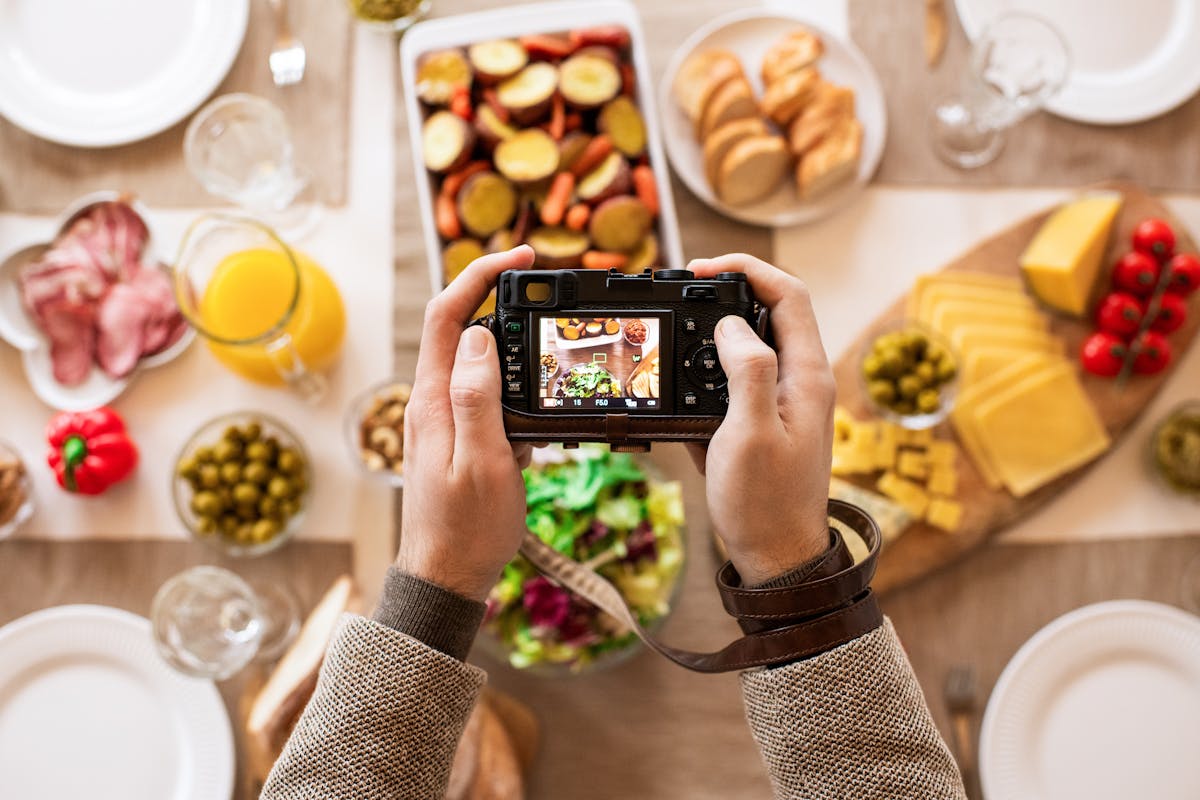In the world of digital content, few visuals capture attention as quickly—or as powerfully—as a beautifully shot plate of food. From sizzling street tacos to creamy desserts and vibrant salads, food photography has evolved into a powerful tool for storytelling, branding, and audience engagement. But crafting mouthwatering food shots that actually drive engagement takes more than pointing your camera at a well-plated dish.
Whether you’re photographing for a restaurant, food blog, product campaign, or your own portfolio, there’s an art and science to creating images that stop the scroll and stir the appetite. In this guide, we’ll explore the key elements of irresistible food photography, and how to use it strategically to spark likes, shares, and conversions.
Start with Story, Not Just Styling
Before you grab your camera, ask: What is this image saying?
Food is emotional. It reminds people of childhood memories, cozy nights, festive gatherings, or indulgent escapes. So rather than just focusing on perfect styling, begin with a concept. Are you showcasing rustic comfort? Fine dining elegance? A fresh, health-conscious lifestyle? The story will shape your choices for lighting, props, angles, and color palette.
For example, a homemade pasta dish might be styled on a wooden table with flour dusted around the frame, while a smoothie bowl might pop against a bright, minimalist background with fresh ingredients arranged artfully beside it.
Lighting Is Everything
Lighting can make or break your food shot. Natural light is often the gold standard—especially diffused window light—for its soft, flattering effect. Avoid harsh direct light or onboard flash, which can cause unappetizing shadows and glare.
If shooting indoors or at night, use a softbox or continuous LED light with a diffuser to mimic daylight. Position your light source at a 45-degree angle for the most dimensional results, and consider using reflectors or white foam boards to bounce light and fill in shadows.
Tip: Always light for texture. You want to highlight the glisten of melted cheese, the flakiness of a croissant, or the juicy sheen of a perfectly seared steak.
Master the Composition
Good food photography feels effortless, but every element in the frame should be placed with intention. A few classic composition tips include:
- Rule of thirds: Place key elements along the grid lines or intersections for visual balance.
- Negative space: Let the food breathe and avoid overcrowding the frame.
- Leading lines: Use utensils, table edges, or ingredients to draw the viewer’s eye toward the subject.
- Top-down vs. 45-degree vs. eye level: The best angle depends on the food. Flat lays work well for bowls, pizzas, or spreads. 45 degrees is great for plated meals, and eye-level shines with stacked or layered items like burgers or cakes.
Remember, the star is the food. Props should enhance the scene, not distract from it.
Color Psychology and Styling
Color plays a subtle but crucial role in food photography. Warm tones—like reds, oranges, and browns—often evoke comfort and appetite, while greens and blues suggest freshness and health. Think about color contrast between the dish and the background to make the subject pop.
Use garnishes wisely. A sprinkle of herbs, a twist of citrus, or a drizzle of sauce adds texture and visual appeal. Consider layering elements like napkins, cutting boards, or raw ingredients to give the photo depth and context.
Stylists often use a few tricks to keep food looking fresh under lights. Light oil sprays can add shine, steam wands add realism, and chilled plates can slow wilting. But in most cases, the best trick is speed—shoot while the food still looks its best.
Editing for Flavor
Post-processing helps bring out the best in your food shots. Tools like Lightroom or Photoshop allow you to:
- Adjust white balance for warmth
- Boost clarity and contrast to emphasize texture
- Enhance saturation carefully to make colors pop without looking artificial
- Crop or straighten to perfect the composition
Avoid heavy filters. Aim for a natural, appetizing look that makes people want to taste the dish, not just admire it.
Engage Through Context and Captions
The best food photos aren’t just visual—they’re conversational. Pair your imagery with storytelling captions, recipes, cultural background, or behind-the-scenes anecdotes. This adds context and gives viewers a reason to engage, comment, or share.
For brands or events, consider showcasing the social aspect of food. A shared table, a toast in motion, or a bite about to be taken can humanize your feed and make your content more relatable. This approach works especially well for event-based photography, where photo booth rental Sacramento might also be styled with culinary themes—creating interactive experiences that guests love to share online.
Consistency Builds Recognition
If you’re building a food brand, blog, or influencer presence, consistency in visual style is key. Choose a few signature elements—whether it’s lighting style, color tones, props, or editing filters—and stick with them to create a recognizable aesthetic. Over time, this visual cohesion builds trust, brand identity, and increased engagement.
Plan your content in advance with mood boards or style guides, and always shoot with your platform in mind—Instagram, Pinterest, websites, or print might require different formats or framing.
Conclusion
Mouthwatering food photography goes far beyond beautiful plating. It’s a fusion of storytelling, lighting, composition, and editing that, when done well, can trigger cravings and clicks in equal measure. Whether you’re showcasing recipes, elevating a brand, or creating content for events, mastering the details of food imagery can help your work stand out in a crowded visual world. With the right approach, your food shots won’t just feed the feed—they’ll drive real engagement.


